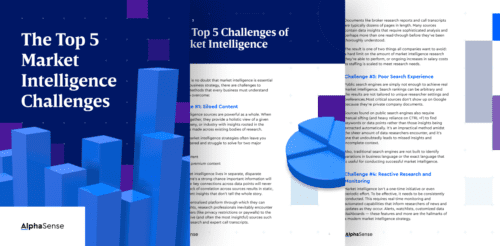COVID-19 brought a new reality to the workforce industry: hundreds of thousands, if not millions of job openings, have remained unfilled for the past two years as managers searched high and low for talent that was seemingly sparse.
Factors relating to the virus changed the conditions in which Americans were willing to go back or even continue working, with many reconsidering the plans they have for their career paths. In 2021, more than 47 million workers quit their jobs while 32% of Americans switched their careers, ushering in a wave of unemployed workers and the Great Resignation. Employees held more power than their employers and demonstrated it through demands for higher wages, remote-working policies, and safety protocols around COVID-19.
But the Great Resignation, according to economic experts, may be coming to an end. As the U.S. slowly approaches an oncoming recession, company labor departments across industries are instilling hiring freezes and implementing strategies to fill positions with temporary, unpaid or less expensive help (i.e. freelancers, interns, seasonal employees, etc.).
“Unfilled jobs were a primary reason that seven in ten companies fell behind in scheduled production, leading many industry leaders to identify labor shortages as a challenge to growth,” McKinsey & Company reported.
In the AlphaSense platform, conversations around “labor shortage” are certainly not sanctioned to a particular industry but rather a pain point most industries are managing. We dug into our content library to see how C-Suite executives in the top five industries are planning to overcome it.
Manufacturing
For companies selling and distributing products across industries, the issue of talent retention and replacement has been extraordinarily detrimental to QoQ revenue performance and customer satisfaction. To solve this issue, companies have pushed aggressive hiring practices–throwing large employment events and offering employees higher wages and referral bonuses.
“While a wide variety of industrial products are required in order to respond to diversifying customer demands and objectives, the labor shortage in the manufacturing industry has become serious, and it has become difficult to respond with conventional production methods dependent on individual employees.”
– Okuma Corp. | ARS
“We are experiencing impacts from the ongoing labor shortage and continue to face challenges in hiring for our manufacturing facilities, which is exacerbated by absences for any employees who are recovering from or have been exposed to COVID-19.”
Bloom Energy Corp. | 10Q
“We are experiencing a shortage of associates and applicants to fill staffing requirements at our U.S. manufacturing facilities due to the current labor shortage affecting manufacturing businesses. This has adversely affected the operating efficiency of our manufacturing facilities. The steps we have taken to address the labor shortage at our manufacturing facilities include hosting hiring events, paying retention bonuses, offering enhanced wages and paying referral bonuses.”
Natural Alternatives International Inc. | 10K
Transportation
As an industry that relies heavily on human workers (self-driving cars are only now being implemented into rideshare apps) the transportation industry has advocated for government involvement. In addition, some companies have established delayed or restricted hours of operations due to their inability to fill positions.
“For many of the retailers, the playback to us is really it’s a matter of dealing with the labor shortage. So we’re a 20-hour a day, 7-day a week operation. For some operators, they can open for restricted hours. For example, some are opening for 1 shift until they hire more staff to get to 2 shifts than otherwise. I would be comfortable saying targeting 80% by the end of this calendar year would be the space I would see us in.”
Auckland International Airport Ltd. | 2022 Earnings Call
“Whilst many of our present operating challenges are difficult to influence, we do want to put the spotlight on one particular aspect that requires prompt action to avoid a repeat performance for next year’s primary sector season of crops, and that is labor. Our cargo customers remain concerned by restrictions on the availability of labor, and in particular, ongoing difficulty with securing RSE workers despite the borders now being open.”
Napier Port Holdings Ltd. | 2022 Earnings Call
“It was well publicized in all industries that labor shortages and skill shortages are an issue. I think us as a company, with our employee value propositions, we deal better with it than most, but it was still an issue that we faced.”
Qube Holdings Ltd. | Q4 2022 Earnings Call
Construction
Similar to the healthcare industry, construction companies have been hiring temporary or third-party talent to meet rising demands while staying on budget. Some have even adjusted their financial models to accommodate these clashing dynamics in an attempt to reach their quarterly and annual revenue targets.
“Additionally, we have experienced effects of the current labor shortage at certain manufacturing facilities, for which we are mitigating the impact through the use of overtime and third-party outsourcing as warranted. It is possible that a prolonged shortage of qualified, available workers could have an adverse effect on our business.”
Northwest Pipe Company | 10Q
“The most serious issue is a significant drop in construction supply capacity, due to a labor shortage resulting from a large number of retiring senior workers. In the next decade, the number of construction workers in Japan is expected to decrease by roughly one million. This value is equal to 20% to 30% of the total number of individuals, which means that we must increase productivity by more than 20%, and that competition for securing human resources will be severe.”
Tokyu Construction Co. Ltd. | ESG Report
Hospitality
For hotels, restaurants, theme parks, and leisure locations, C-Suite executives have been focused on rebranding employment experiences in an attempt to attract potential talent–along with aggressive recruiting. In regard to existing employees, H.R. teams have executed training programs and other initiatives to retain and motivate workers.
“The labor shortage and general inflation has resulted in higher costs in a variety of categories. Most of the product cost increases have been offset by menu price increases. However, the labor cost due to general labor market shortages and competition for employees has increased wage costs more than was offset by the menu price increases. In the company-owned CPP locations, the labor shortage and spiraling costs have largely been mitigated by aggressive recruiting and training. The labor cost shortage, however, is making it more difficult to franchise nontraditional locations because the host facilities are not finding enough labor availability to expand their business.”
Noble Romans Inc. | Q2 2022 Earnings Call
“The difficulty of finding an enthusiastic and committed workforce has intensified and thus it will be crucial that we make every effort to attract good people and that we retain them. Human resources programs are developed to handle this labor shortage by focusing on crucial issues such as productivity, motivation, standards, training, hiring, and development.”
The National Corporation for Tourism Hotels | ESG Report
“I think the bigger issue is to do with labor shortage because we have come under pressure in the hospitality markets. I’m sure people have heard that the workforce for hospitality has reduced and people have gone to work in other places. On that, our group human resources team have put together a number of initiatives to address this issue, and we’re basically focused on making the employment experience as attractive as possible for our company.”
The Hongkong and Shanghai Hotels Group Ltd. | Q2 2022 Earnings Call
Healthcare
Potentially one of the most controversial developments of healthcare systems that emerged from the COVID-19 pandemic was the concept of traveling nurses. Since their demand has steadily decreased due to the Pfizer and Moderna vaccines, healthcare leaders have begun considering and adopting surgical robots to cut down on operational costs and embrace technologically efficient ways of practicing.
“It’s the labor shortage, but it’s also which site of care the labor shortages are in, you come to different conclusions, right? When we talk to folks in the ambulatory environment, what we’re trying to do is establish efficiencies so that you need fewer arms and legs in the OR and one of those solutions are robots.”
Pacira BioSciences | Q1 2022 Earnings Call
Recent Developments in 2023: Low Unemployment Rates
The Bureau of Labor Statistics job report, released in June of this year, revealed a seemingly optimistic outlook—the country’s unemployment rate is maintaining close to its lowest level in 70 years, despite a slight uptick last month.
While many are seeing these numbers as the long-awaited end to the Great Resignation, a new set of problems are arising. As surpluses of available workers shrink, business owners, mainstream economists, and the policymakers who listen to them are struggling to keep wages down.
The Federal Reserve has found a direct correlation between low unemployment and high inflation, citing an urgent need to restore “balance” to the labor market via increasing unemployment and suppressing wage growth so as to tame consumer prices. In fact, Republicans in several states have proposed legislation to loosen child-labor restrictions as a way to expand the labor supply.
If the labor market continues with this trend, the Congressional Budget Office projects the country’s workforce to expand by a mere 3.6% between 2022 and 2031—approximately one-eighth of the pace in the 1970s. Over the following decade, that growth is projected to slow even more, to 2.9%.
That means employers could face decades of a stagnant labor pool. To attract enough workers, employers will also be forced to provide better benefits and working conditions.
Navigating Labor Shortages
Every industry is facing specific challenges associated with the worker shortage, and if you are in the same boat, market intelligence platforms are a reliable tool to navigate these choppy waters. In our whitepaper, The Top 5 Market Intelligence Challenges, learn how market intelligence tools can give you insight from leaders around the world on how to handle industry-disrupting events.
More importantly, you need a market intelligence platform to leverage critical business intel and take the lead in your respective industry. AlphaSense’s innovative AI search engine and an exclusive content library—composed of over 10,000 content sourced—can help you get there.





